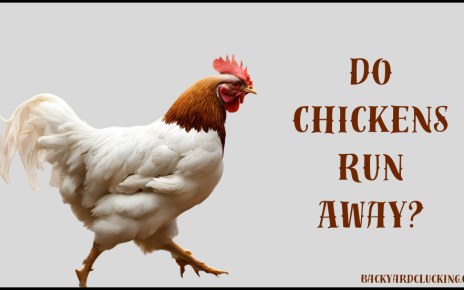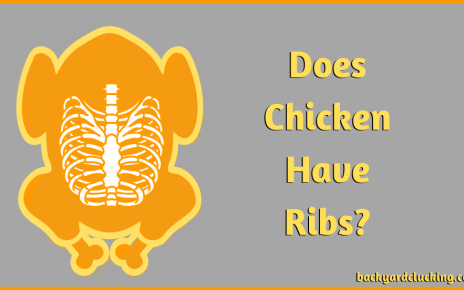Suppose you’re curious about the anatomy of a chicken. In that case, you might be wondering about their different openings and how these play roles in their digestive, urinary, and reproductive systems. This article will review a chicken’s other holes (body openings) to help you better understand their mysteries.
How Many Holes Does a Chicken Have?
One Hole: The Cloaca
Yes, that’s right. Chickens have only one main hole called the cloaca. This might sound strange, as most mammals have separate openings for digestive, urinary, and reproductive systems.
However, chickens and other birds manage these functions through this single opening.
The cloaca is an internal chamber essential for a chicken’s excretory and reproductive processes. Let’s break it down by each system:
Digestive System:
Like other animals, the chicken’s digestive system processes food and extracts nutrients. Chickens swallow food that goes through the esophagus, is mixed with enzymes in the crop, and moves to the gizzard for grinding.
After that, the food enters the small intestines, absorbing nutrients. Finally, the remaining waste goes into the large intestine and the rectum, which connects to the cloaca.
Urinary System:
Chickens have kidneys that filter waste from the bloodstream. However, unlike mammals, chickens don’t produce urine in a liquid form.
Instead, they excrete a semi-solid, crystalline waste called uric acid. These crystals are mixed with the feces in the cloaca, leading to the familiar white-cap appearance of bird droppings.
Reproductive System:
Chickens have separate male and female reproductive organs connecting to the cloaca. In females, eggs are formed in the ovary and then shelled in the oviduct.
When an egg is ready for laying, the cloaca’s walls fold inward to create a temporary tube called the vent, allowing the egg to pass through without touching fecal matter.
Males don’t have external genitalia. Instead, they have two tiny testes inside their abdomen. The sperm produced there travel through the vas deferens and are released through the cloaca during mating. Chickens mate by touching their cloacas together, a process known as a “cloacal kiss.”
Other Openings Worth Mentioning
Although not holes in the same sense as the cloaca, chickens have a few other body openings worth noting:
1. Beak (Mouth): Chickens use their beak to eat and drink and manipulate objects, and preen. The beak connects to the esophagus, leading to the digestive system.
2. Nostrils (Nares): Located at the base of the beak, these two small openings allow chickens to breathe and help regulate their body temperature.
Fun Facts
- Did you know that baby chickens (chicks) breathe through a tiny hole in their eggshell before hatching? This hole called the pore, allows the chick to get oxygen during the final stages of development.
- Some birds, such as pigeons and doves, have a specialized sac called the bursa of Fabricius in their cloaca. This organ, typically present only in younger birds, helps produce immune cells that protect against infections.
Now you have a clear understanding of the anatomy of a chicken and how their mysterious single hole plays a vital role in making them one of the most fascinating animals on earth!
How does a rooster fertilize an egg?
For a rooster to fertilize an egg, they must engage in what’s known as a “cloacal kiss.” This is when the male and female birds align their cloacas together, and the sperm from the male is deposited into the female.
Once inside her body, the sperm will travel up her oviduct until it reaches the ovaries. When an egg is released from the female’s ovary, it passes through the oviduct and comes into contact with the sperm, which may then fertilize the egg.
Sometimes, a rooster may even fertilize eggs before they are laid by depositing sperm directly onto them in their follicles. This process is called “in ovo fertilization” and can increase the chances of a thrive hatch.
Hens that have been successfully mated with roosters can lay eggs for several months. After this time period, they will need to be mated again in order for new eggs to be successfully fertilized.
Therefore, you must keep track of when your chickens were last mated and consider remating them at the appropriate interval to maximize fertility.
So, there you have it! Now you know how a rooster fertilizes an egg. As you can see, it is a complex process that requires careful attention for successful hatchlings to be produced.
Conclusion
In conclusion, chickens are fascinating animals with many unique features. One of their most intriguing characteristics is the single hole they possess called the cloaca, which serves as a multi-purpose opening for their digestive, urinary, and reproductive systems.
Additionally, we discussed how roosters fertilize eggs through a “cloacal kiss” process to produce viable hatchlings.
With this knowledge, you can now appreciate these amazing birds’ sophisticated anatomy.
Thanks for reading, and we hope you enjoyed learning about chickens! Now get out there and enjoy some feathered friends.



